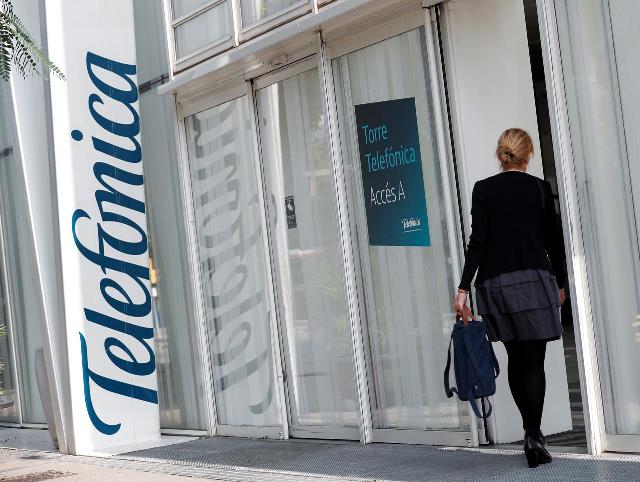Telefonica has revealed that its Capex during January-September 2022 fell 17.8 percent to €4.020 billion though it strengthened its focus on 5G network.
 Capital spending was €1.045 billion (–23.5 percent) for Telefonica Spain, €902 million (+11.3 percent) for Telefonica Germany, €1.297 billion (+29.5 percent) for Telefonica Brazil and €659 million (+0.6 percent) for Telefonica Hispam during the first nine months of 2022.
Capital spending was €1.045 billion (–23.5 percent) for Telefonica Spain, €902 million (+11.3 percent) for Telefonica Germany, €1.297 billion (+29.5 percent) for Telefonica Brazil and €659 million (+0.6 percent) for Telefonica Hispam during the first nine months of 2022.
Telefonica is in the process of gradually upgrading fibre (XGS-PON ready). Telefonica believes that the evolution from 1Gbps to 50Gbps will be done with minimal impact on Capex and bring new capabilities development as well as 5G networks optimization and backhaul.
In the Open Broadband project, lab and field tests progressed well during 2022 and commercial rollout is expected for 2023 in Brazil, while Open access fixed CPEs (in-house) reached 48.6 million, including 11.8 million HGUs (95 percent of FTTH customers).
OPA-H (Open Access for Home) builds a differential value proposition through our CPEs application layer virtualisation (massive deployment of Single Agent in >4M HGUs in Spain with use cases of operations and services of Smart WiFi and Secure connection, also tests in 2022 for Brazil and Hispam).
Telefonica’s 5G network coverage has reached 800 towns and cities in the UK, 75 percent population in Germany, 83 percent population in Spain and 35 cities in Brazil. Telefonica has already launched 5G SA in Brazil. 5G will be applied across all sectors being 90 percent more energy efficient than 4G per unit of traffic.
Telefonica’s LTE coverage is 90 percent (99 percent in Europe and 86 percent in Latam), up 6 p.p. y-o-y.
Open RAN virtualization will drive automated IT mobile architecture. Telefonica is aiming for achieving 30-50 percent of total RAN growth between 2023-2025. Telefonica digitalised 81 percent of Telefonica’s processes and managed in real time.
Telefonica is reducing energy consumption through initiatives such as legacy switch off or reducing RAN consumption. Since 2015, Telefonica reduced energy consumption (electricity + fuel) by 7.2 percent despite the traffic managed by networks increased more than 6.7x.
In Spain, 749 COs were closed in 2022 (2,197 since 2014), as part of the copper migration targeted for 2024, and Hispam progressed in multi-layer and 2G switch-off.
Telefonica is using 100 percent of electricity from renewable sources across the core markets, Peru and Chile. In 2022, Telefonica began to purchase renewable energy in more Hispam markets and Brazil progressed in its Distributed Generation project, with the installation of 43 power plants (of a planned total of 85) that will allow the generation of more than 700GWh renewable energy per year.
Telefonica said its revenue grew 11.2 percent to €10,343 million. Telefonica has achieved a net income of €1,486 million in the first nine months of 2022.
The strong growth in revenues in the third quarter was driven by double digit increases in Brazil (+29 percent) and Hispam (+18.2 percent), as well as in Spain (+0.2 percent) and Germany (+6 percent), a pattern that is also reflected in the first nine months.
Telefonica has allocated more than €4 billion for growth, with the focus on the development and deployment of ultrafast networks. Including VMO2, investment exceeded €4.7 billion in the first nine months of the year, an increase of 5.6 percent, bringing the ratio to revenues to 13.8 percent, in line with the target set for the year.
Telefonica Tech’s revenues grew by 70.6 percent through September, reaching a total of €1,021 million. In the third quarter, revenues increased by 68.6 percent to €386 million.
Telefonica maintains its global leadership (with the exception of China) with more than 166 million real estate units passed with ultrafast networks (+6 percent), of which a total of 87.2 million passed through the company’s own networks. Of the total number of ultrafast networks, 62.2 million are fibre-to-the-home (FTTH), and the vast majority (59.4 million) passed over Telefonica’s network.
At the end of the third quarter, Telefonica’s access base stood at 383.5 million, 5 percent more than a year earlier, with growth of 17 percent in high value accesses such as fibre and 8 percent in mobile contracts.





